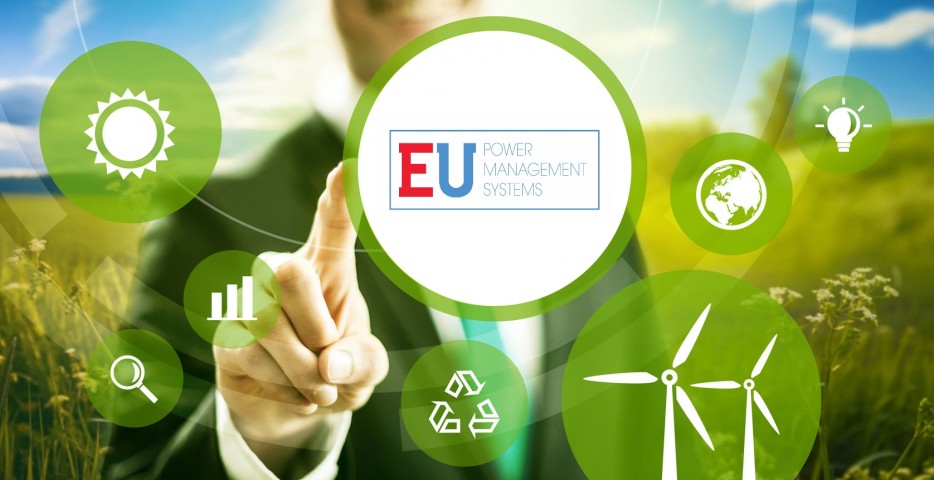2020 Vision – Textiles Sustainability
Sustainability for the Future With Proven Cost-Savings Solutions
https://www.etextilecommunications.com/021820-eupms
EU Power Management Systems (EUPMS), based here, contributes to business sustainability goals by reducing electricity costs in proven and guaranteed projects, improving energy efficiency objectives and accomplishments into financial terms, according to company founder Edmundo Duarte.
Duarte, who founded the company in 2004, includes several textile plants are among his fast-growing client list. Among them: Inman Mills, Shuford Yarns, Buhler Quality Yarns, Tencate Fabrics, Greenwood Mils, Supreme Corp., Supreme Corporation, Sattler Corporation, Conitex-Sonoco and many others. Additionally, EUPMS has served prominent hotel groups such as Hyatt, hospital chains such as Trinity Health, St. Francis Hospital, St. Mary’s Health Care System and Jupiter Medical.
He recently explained four concepts in his area of expertise: energy efficiency, rational use of energy, energy management and intelligent demand response. These concepts reduce facilities’ energy costs while increasing business sustainability – yet each one deserves a better understanding since many confuse them.
Energy Efficiency
The Energy Efficiency notion relates to better use of available sources of energy, thus use them efficiently for a successful result. When looking if equipment is energy efficient, i.e. a chiller, the Chiller Coefficient of Performance (COP) indicates the ratio of the refrigeration effect produced by the chiller against the amount of electrical energy that went into the machine to produce this, and it varies with the cooling load.
Therefore to increase the chiller COP, a new smart panel and/or variable frequency drive (VFD) can be retrofitted to the motor controls, thus reducing the rotation speed of the compressor, which in turn decreases the electrical demand and increases the COP at part load. Similar results apply to motors with VFDs, thus controlling ramp-up and ramp-down the motor during start or stop. Energy efficiency refers to energy conservation, keeping and/or enhancing the service patterns with less cost, using smaller amount of required resources. Nonetheless, such efficient actions are not synchronized with utilities metering, therefore their effectiveness only focuses on equipment performance.
Rational use of energy
Rational use of Energy is predominantly concentrated in engaging and empowering people for environmental actions; combining teachings, awareness and addressing ecofriendly factors that will promote a strong impact in equipment longevity, lower operational costs, efficiency and energy cost-savings. The study of a facility’s energy footprint is included in this important activity and is an essential work for business sustainability. Energy management (EMS)
Energy management (EMS) encompasses preparation, control and handling of energy consumption systems (water, gas, electricity, fuel, etc.), tracking and monitoring (M&V) a facility’s energy usage, allowing set-point adjustments and/or performance to enhance overall efficiency. Such a structure requires proficient operators and sizable investments; nonetheless, this highly effective technology does not produce real-time load management events and cannot uneventfully reduce peak demand nor is synchronized with utilities integration period.
Intelligent Demand Response (IDR)
Intelligent Demand Response (IDR) is a fully automated technology that real-time monitors and manages 24/7 electric energy demand in a facility, thriving fully automated load management processes synchronized with utilities meter. During utility’s metering integration cycles, selected equipment connected to the IDR Control Network allows effective power optimization on facility’s coefficient of simultaneity on demand (instant power – kW), thus reducing electrical load while respecting operation design intent and equipment reliability.
The input from designated IDR controlled Systems guarantee that set-points are privileged (i.e. chilled water).
Remote access allows data management, fine-tuning, reporting, software adjustments and full supervision of computerized procedures, especially tailored for each facility. Utilities kWh pulse signal synchronization allows IDR effectiveness: in the right moment, to the right equipment with adequate results. IDR technology supports the rational use of energy actions, identifying a business’s energy footprint, detecting equipment malfunction, waste or irregularities in production. It can interface EMS while promoting the better use of resources (energy efficiency).
.webp)


